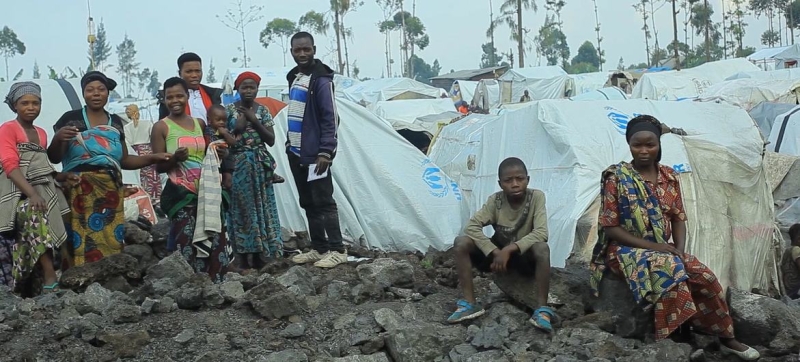
Internally displaced people in a camp in Goma, eastern DRC. EXPLAINING | What is the UN doing in DR Congo Peace and Security
The current phase of fighting between government forces and the M23 armed group broke out in the mineral-rich eastern region of the Democratic Republic of Congo (DRC) in late January. Despite security concerns, rising death tolls, and the spread of monkeypox and other diseases, the UN continues its work.
Here’s what you need to know about how the UN, its peacekeepers and humanitarian agencies are helping the people of the central African country of 105 million people, many of whom are currently in acute crisis.
Humanitarian Aid
UN agencies have been working in the DRC since 1960, when the country declared independence from Belgian colonial rule and became a UN member. They provide assistance to those in need, from education and vaccinations to food and shelter. The country has endured cycles of violence for decades, with conflicts intensifying in the early 2000s and the emergence of the M23 armed group.
Recent clashes have led to the deaths of peacekeepers and the temporary evacuation of non-essential UN personnel from North Kivu last week, but the UN Office for the Coordination of Humanitarian Affairs (OCHA) says its staff remain on the ground and are documenting growing needs.
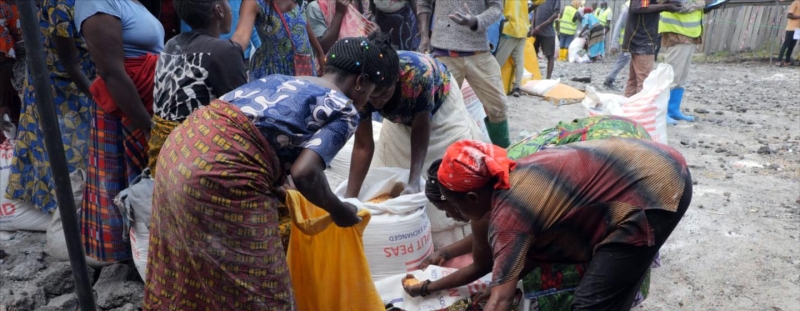
Goma residents receive food aid.
According to OCHA, 21 million people in the DRC needed humanitarian assistance before the current clashes. That number is now rising daily as violence intensifies and M23 fighters seize towns. Hundreds of thousands of people are fleeing Goma, Sake and towns in South Kivu, while tens of thousands are already displaced in nearby camps. Seven million people are currently displaced across the country, including 700,000 in North and South Kivu.
Growing needs
Hunger is worsening and sanitation and housing conditions are becoming unbearable as the situation worsens. There are currently 2.7 million people in acute food insecurity in the eastern towns of Ituri province and in North and South Kivu, OCHA said. The agency is working with the World Food Programme (WFP), the United Nations Development Programme (UNDP) and the World Health Organization (WHO) to provide urgent support, from food supplies to medical supplies and services.
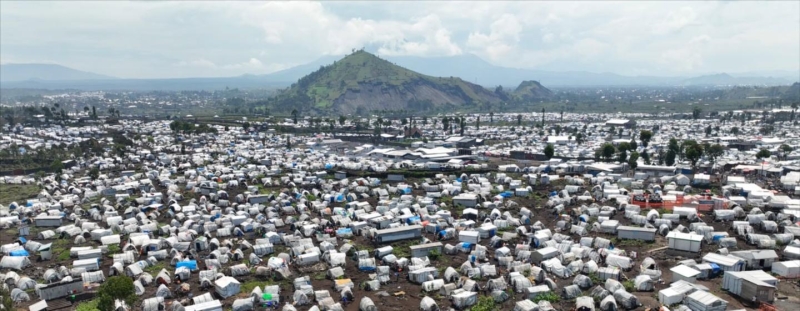
A camp for internally displaced people in eastern DRC.
The UN Refugee Agency (UNHCR) is providing protection services and humanitarian assistance to those displaced, while the Office of the UN High Commissioner for Human Rights (OHCHR) is helping those affected access the support they need. Meanwhile, the International Organization for Migration (IOM) is providing emergency shelter, water, sanitation and hygiene services to displaced people and host communities in Goma, and managing the camps. IOM also tracks population movements through a dedicated monitoring system that enables a more effective humanitarian response.
Health crisis
WHO says mass displacement has created a health crisis and increased the risk of cholera, monkeypox and other endemic diseases in camps and communities in North and South Kivu. WHO teams remain on the ground to provide medical care as hospitals are overwhelmed with patients injured in the ongoing clashes.
Thousands of doses of monkeypox vaccines are ready for use. Meanwhile, the United Nations Children’s Fund (UNICEF) has delivered medical kits to hospitals in Goma to treat more than 50,000 people affected by the violence.
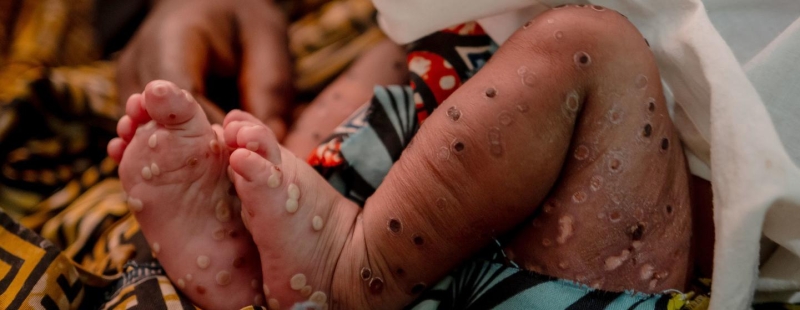
A three-week-old baby with monkeypox in the DRC.
The destruction of health infrastructure has also led to an increase in maternal mortality: three women die every hour from complications during pregnancy or childbirth. According to the United Nations Population Fund (UNFPA), abduction, rape and exploitation continue to be used as weapons of war against women and girls.
While the agency has temporarily suspended staff visits to displacement camps due to the deteriorating security situation, UNFPA continues to provide emergency support through mobile clinics and adapting its operations to the needs of the newly displaced. However, as needs rapidly increase, UN agencies are calling for an urgent increase in financial support to provide emergency assistance to all affected people.
Peacekeeping Operations
The United Nations Organization Stabilization Mission in the Democratic Republic of the Congo (MONUSCO) was established by the Security Council in 2010 to support the Government in protecting civilians and humanitarian workers, and to contribute to peace and stabilization efforts. The roles of peacekeepers and humanitarian agencies are distinct, although they complement each other in terms of protecting civilians.
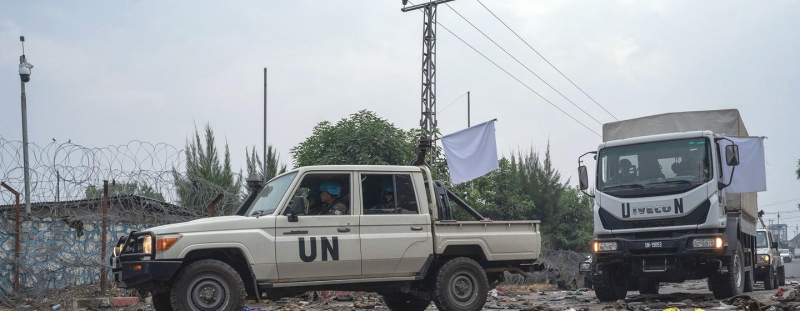
Peacekeepers in Goma.
The 11,500 UN “blue helmets” were originally scheduled to leave the country by 2025, but the Security Council extended their mandate last December at the government’s request.
MONUSCO chief Bintou Keita told an emergency Security Council meeting on 26 January: “We are trapped.” M23 militants have killed nearly 20 UN and Southern African Development Community (SADC) peacekeepers in the past week.
Cooperation with authorities
In line with its mandate to protect civilians, the UN mission has stepped up support for the DR Congolese armed forces and is actively engaged in combat alongside SADC forces, the head of MONUSCO told the Security Council.
Keita held talks with senior officials, including the prime minister and the heads of the army and police. A joint team was also established to coordinate actions on security, human rights, humanitarian assistance, communications and the legal status of M23-controlled areas.
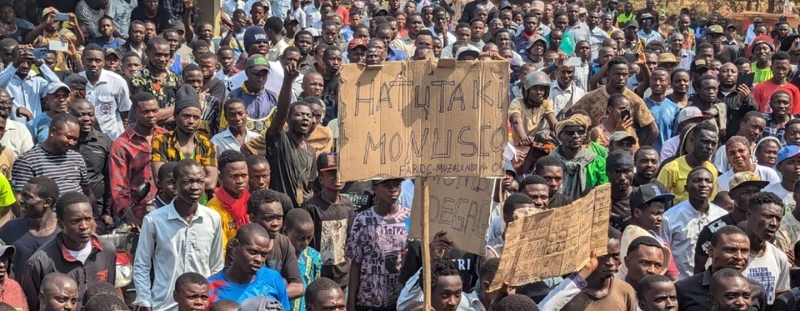
Protesters in the city of Beni, which has been designated the new capital of North Kivu province in eastern DR Congo.
Root Causes of the Crisis
The conflict in the eastern Democratic Republic of the Congo is linked to the events that took place in neighboring Rwanda in 1994, when the genocide against the Tutsi led to mass displacement and destabilization of the region.
The fighting in these areas has been characterized by extreme brutality. For example, the landmark trial of Sheka, the leader of one of the armed groups, played a decisive role in recognizing rape as a war crime.
The crisis is exacerbated by the struggle for control of rich deposits of rare earth minerals located on the border of the DRC and Rwanda. Deposits in the Democratic Republic of Congo include gold and diamonds, as well as key components used in the production of mobile phones and other electronic devices. Coltan, tin, tantalum, tungsten and other so-called “conflict minerals” are mined and sold by armed groups to finance their activities.
